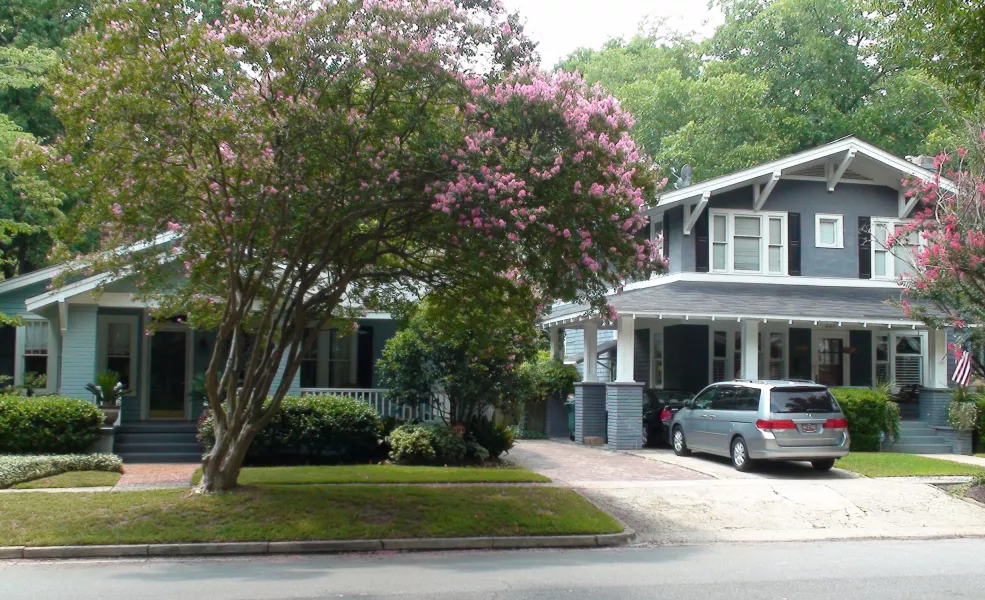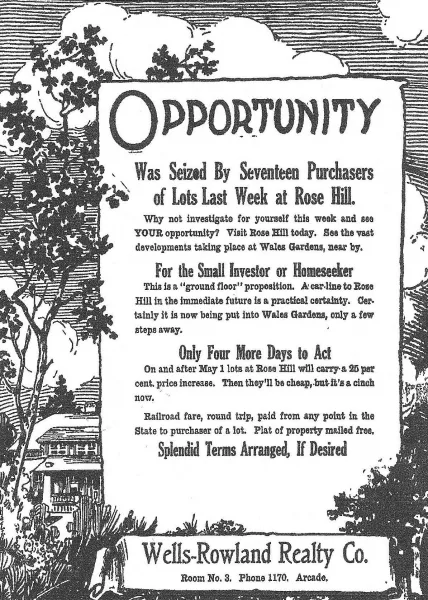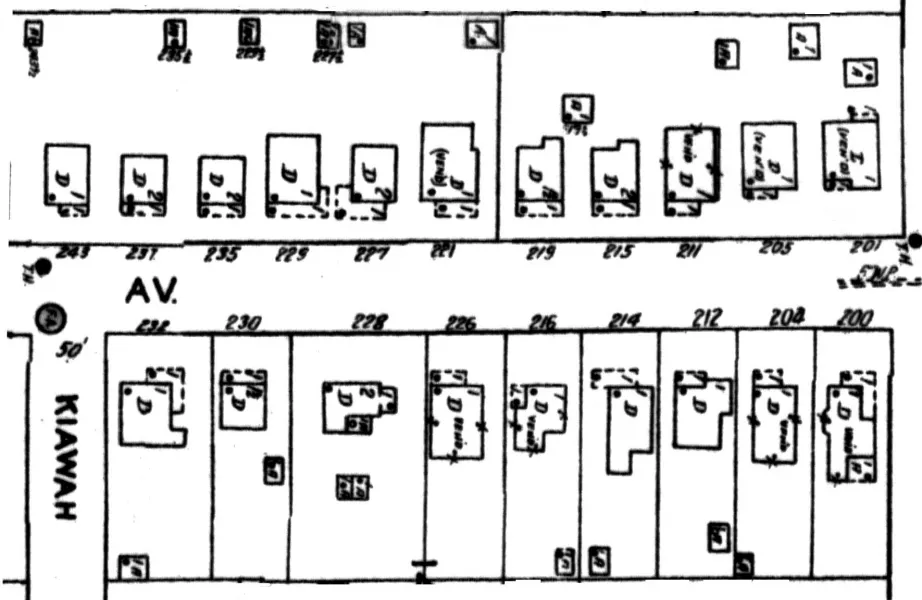200 Block of South Edisto Avenue
Development of Rose Hill
Development of Rose Hill
One of the first recorded plans to develop the newly designated Rose Hill suburb was a 1914 plat drawn by M.Goode Homes for the Rose Hill Development Company. Though subsequent plats were drawn in preparation for lot sales in following years, features like gridded streets comparable to other Columbia suburbs and kit homes from popular catalogs quickly made their appearance. The earliest blocks in the heart of the neighborhood, for instance, contained numerous bungalows like these, lending legitimacy to Rose Hill's nickname, 'the bungalow community.' Claiming quickly selling lots and offering paid round trip rail tickets to anyone purchasing plots within Rose Hill, the Wells-Roland Realty Company ran illustrated advertisements within The State newspaper that featured the neighborhood's trademark housing form — the bungalow. Designed for occupants with middle-class incomes, Rose Hill's residences were modest, when compared with the larger, often more elaborate, houses to the north in Wales Garden and University Hill.
Early residents of 219 South Edisto Avenue speak to the neighborhood's trend toward middle-income citizens. For instance, the 1925 Columbia city directory indicates that Russell H. Acree, a secretary for the South Carolina Cotton Seed Crushers Association resided there. Fifteen years later, the property was home to Lynn S. Tomkins, a clerk for the Southern Railway system. As late as 1950, 221 South Edisto was inhabited by a farmer, perhaps a feature of Rose Hill's proximity at that time to undeveloped land. Designed as references for determining insurance rates, Sanborn Fire Insurance Maps offer detailed snapshots of buildings within communities. Recording not only building composition, number of stories, and footprints, these maps also illustrate the relationship of individual structures to neighboring buildings, roads, and utilities, such as water mains.
By comparing earlier editions of maps with later versions, the growth of neighborhoods, as well as changes made to existing buildings, becomes obvious. This excerpt from the 1956 Sanborn Fire Insurance Map illustrates the size of houses standing along South Edisto Avenue decades after the neighborhood's initial development in the 1920s. Unlike so many houses built today that feature attached or integrated garages, during the early 20th-century such amenities were virtually unknown. Instead, developers erected garages to the rear of houses so that the importance, and in most cases the architectural impact, of the residence was not overshadowed by what was considered a building of secondary importance.


